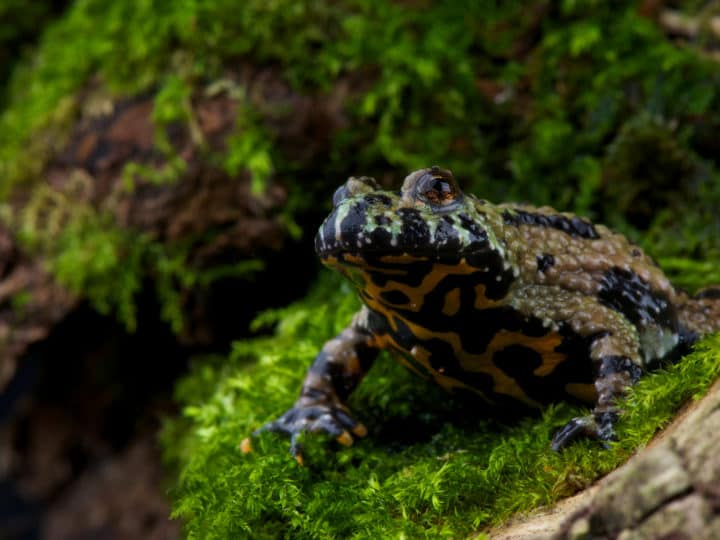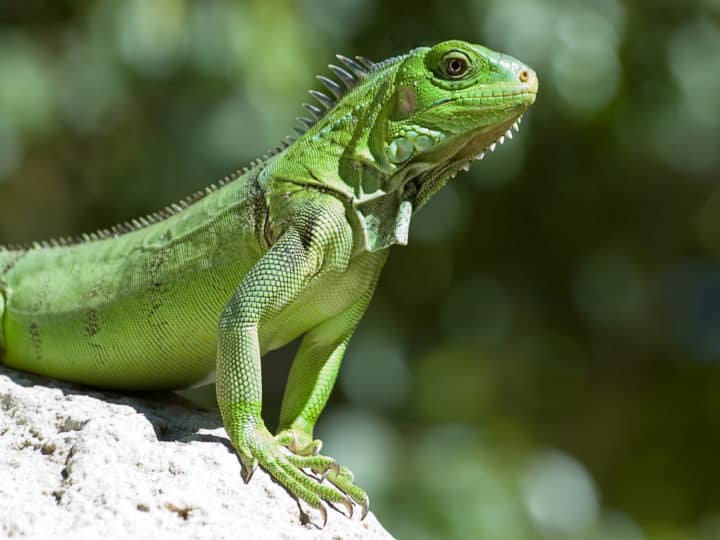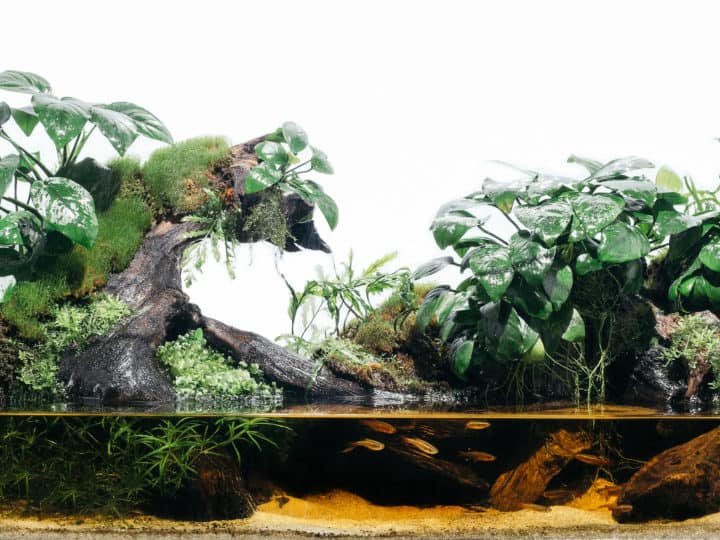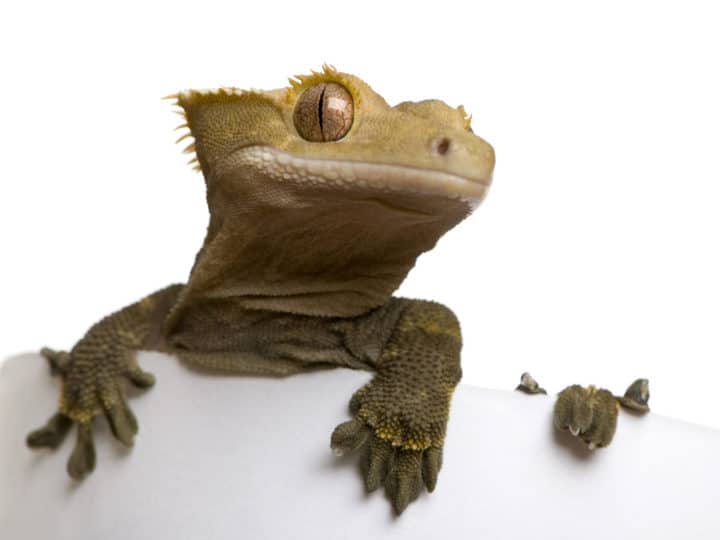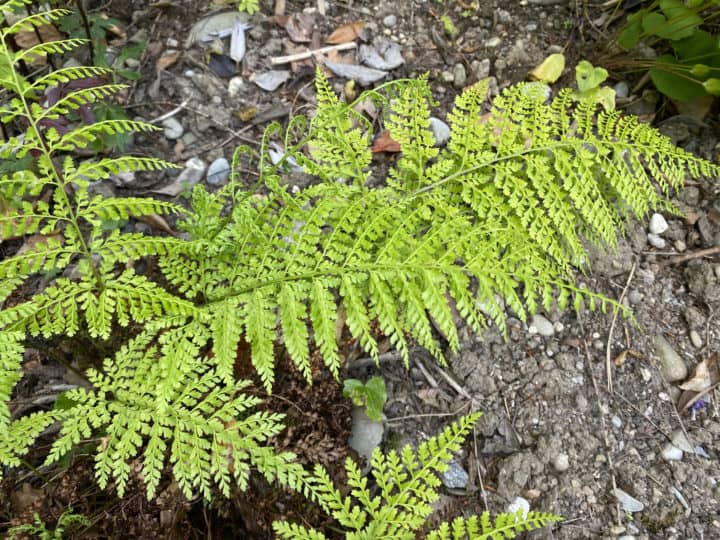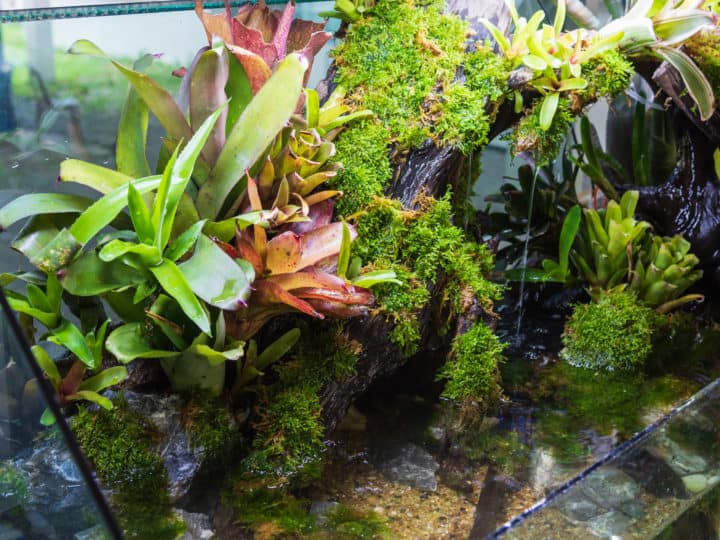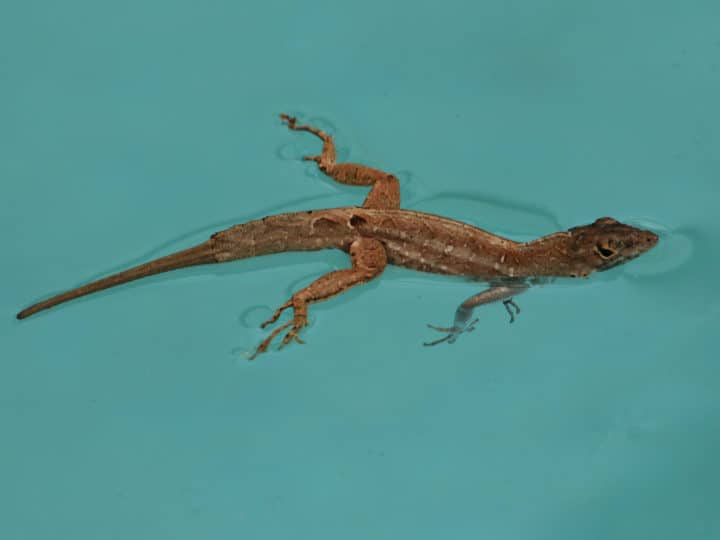There are a lot of elements that need to be incorporated into a paludarium. By definition, you need to have at least some water and Earth elements! Since paludariums always have water, it can raise the question of whether you need to include a water filter.
Quick Answer
Technically, you don’t need a water filter for a paludarium. However, without a water filter, the maintenance required is increased, and it invites a number of risks. A water filter, while not necessary, is a strong recommendation for the health and safety of the living things inside the paludarium.
For the rest of this article, I’ll explain the role of a water filter in your paludarium. Afterward, there will be a discussion of the risks involved when a water filter is not included, as well as the corresponding maintenance required to mitigate those risks and keep your tank’s plants and critters feeling happy and healthy!
Reasons to Include a Water Filter in Your Paludarium
As stated previously, you can technically have a successful paludarium without a water filter. However, there are many good reasons that the addition of a water tank is a great choice to make, both for yourself and for your paludarium!
Suppose you want to skip the water filter for aesthetic purposes. In that case, there are plenty of options for camouflaging the filter so that it’s invisible to anyone looking into the paludarium.
Check out the following YouTube video for a paludarium build that does just this!.
The man featured in the video hides his filter inside of a tree trunk tube so that it’s only visible if you know exactly where to look. This is just one such option for hiding the water filter in your tank. You could also utilize greenery, logs, cork, etc.
The following sections are some of the biggest reasons to include a filter when building your paludarium habitat. This list is not exhaustive, far from it, but I would argue that they’re the top three to keep in mind!
Water Filters Lower the Maintenance Needed
As soon as a tank has water and living things, the maintenance required can increase substantially. Animals and plants both produce waste, which can harm the other critters in your paludarium without cleaning assistance.
While you have hopefully provided some sort of decomposer to your paludarium, such as springtails or isopods, they won’t be sufficient to completely clean the tank.
Plants will shed leaves, animals will produce feces and other waste products, and bacteria will thrive without the help of a filter or consistent, frequent cleaning and water changes.
If you don’t include the filter, you’ll need to do a lot of cleanup work. The frequency depends on the size and capacity of your tank, but at least every few days would be needed. After that, the organic matter begins to decompose, and waste products will build-up, which can cause harm to your tank inhabitants.
The waste products that plants, fish, reptiles, and amphibians produce have ammonia, which has a substantially higher pH level than your tank’s contents should have.
You want the pH level of your tank’s water to be around neutral or at a 7. Ammonia has a pH of around 11. If it builds up and causes the pH level to get too high, the animals can face very serious and unpleasant side effects, such as burns and asphyxiation.
Adding a water tank will cut this risk down substantially. Part of the tank’s mechanism can break down that ammonia into harmless nitrates.
A water filter is a great way to cut down on maintenance and keep your tank healthy. Again, it does still depend on the tank size, capacity, and water filter type to know how often maintenance is needed. Still, plenty of die-hard paludarium fans can keep their cleanings to a yearly frequency!
Filters Keep the Water Moving
One of the key functions of the water filter is to keep the water in continuous motion. In the natural habitat that you’re trying to replicate in your paludarium, water is in a constant state of cycling. A filter can help recreate some of those cycles in the tank ecosystem!
If you can remember your middle school science classes, you might recall that water is constantly changing states in nature — from water to vapor, to ice, and back to water. This process happens through evaporation, condensation, and precipitation. The United States Department of Agriculture calls this process “nature’s recycling system“.
Since your paludarium is removed from nature and does not have access to this natural recycling system, that process needs to be completed by other means.
So, you’ll either need to intervene and execute this process manually with consistent water changes and tank cleanings or allow a water filter to shoulder most of that work.
Aeration from Filters Prevent Oxygen From Plummeting
Another function of a water filter is to add oxygen back into the water prior to its return to the tank. Even fish, who are constantly underwater, need oxygen to survive.
The measure of how much oxygen, called dissolved oxygen, is in a body of water correlates to the quality of that water for living things. As the paludarium’s habitants take in the oxygen dissolved in the water, that oxygen is not in the water anymore for others to breathe in.
Eventually, the amount of oxygen in the water can get too low to sustain life. In nature, this is called hypoxia, and the areas affected are called dead zones. You definitely don’t want your paludarium to become a dead zone.
As a result, the oxygen needs to be added back somehow, or the water needs to be replaced with water that has more oxygen dissolved into it. Changing the water is a very laborious process that you should do often unless you can add oxygen back to water by some mechanical or chemical means.
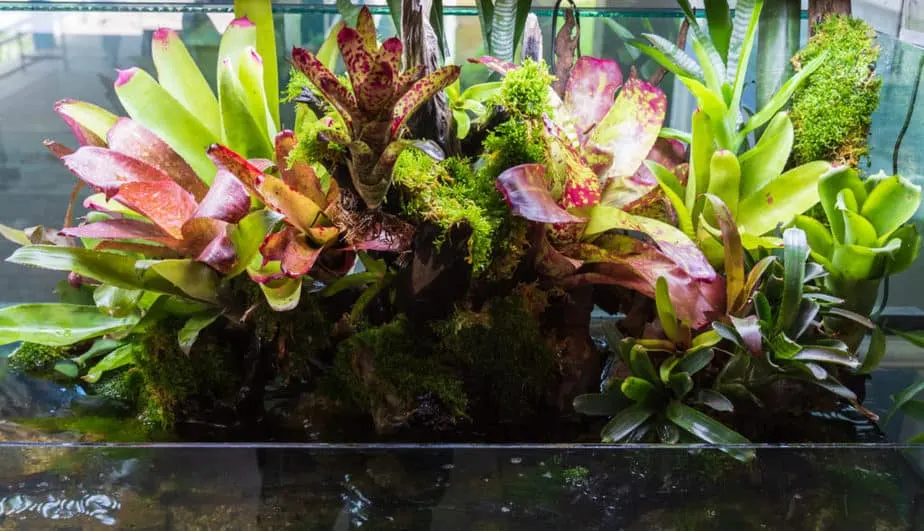
One such process, which can add water both mechanically and chemically, is a water filter. Instead of needing to constantly change the water, a filter is always engaged in the aeration process. For as long as the water filter is running, it’s adding oxygen back into your paludarium’s water and keeping your beautiful creatures full of the oxygen they need.
Some Filters Can Create a Waterfall
The last, but definitely not least, reason that you should consider using a filter in your paludarium is that lots of them are built to create a waterfall in your tank.
Having a waterfall is probably so exciting that you have already just made up your mind and don’t need much convincing.
If I’m correct, here’s one of the said waterfall filters available, the Hygger 150GPH 20-50 Gallon Filter. Not only does this filter create a small waterfall for your critters, but it is also very easy to clean and is able to be modified in many ways to best suit your paludarium.
Imagine your cute little turtles or other critters taking a shower under one of these waterfall filters, happy as a… clam? I’m going to say that they will be happy as a turtle instead!
Instances When a Filter is Necessary for a Paludarium
When you want to create a bioactive ecosystem, you need a filter in your paludarium.
A bioactive paludarium is self-sustaining, self-maintaining, and self-cleaning. A water filter is one of those components that you must have in such an arrangement.
More Information About Bioactive Systems
In a nutshell, making a bioactive paludarium (or any other sort of tank system) means that you’re trying to replicate an ecosystem. By ecosystem, I mean the flora, fauna, and cycles that would occur in the natural habitat of the plants and animals living in the tank.
So, if you’re making a rainforest bioactive paludarium, you would include a base of rainforest-friendly soil, what is called substrate, with plenty of happy decomposers wriggling around. Some favorites are isopods, springtails, and earthworms. These are your miniature tank janitors, working tirelessly for you!
After this, you add the other elements of the ecosystem, such as:
- Rocks, trees, caverns, hiding spots, other props
- Clean water
- Warm light source
- Plants from the region
- Animals from the region
- Water filter
This is just a brief overview of this type of paludarium.
Types of Water Filters for Paludariums
Ultimately, if you decide to include a filter, the type is completely up to personal preference. There are some benefits and drawbacks to each of the options available since no man-made filter can live up to the almighty Mother Nature.
Here are some of the most common types of filters used for paludariums:
- Canister filters — these are the types I see most frequently. They can filter large amounts of water, with very effective filtration. On the other hand, they’re sometimes tricky to take apart for cleaning.
- Sponge filters — these are the ol’ faithful of tank filter systems. Sponge filters are super cheap and easy to maintain. However, they’re placed within the tank and thus take up valuable space. Additionally, they don’t look that pretty, so you would probably want to camouflage them.
- Power Filters/Hang Filters — these are known to be some of the most effective filters available. Hang them on the inside rather than off the back to quiet the motor sound.
Make sure to check out this article where I’ve compared 3 different filters that are suitable for paludariums.
Other Equipment Needed For a Paludarium
In addition to the water filter, you might not be sure what else is needed for your paludarium. By definition, paludariums include both land and water elements, so you’ll want a base that has both of these. Additionally, you’ll need a tank lamp for light and warmth. After that, it’s up to what your heart desires!
Animals for Paludariums
If you aren’t building a bioactive paludarium, animals are optional. Some of the animals people include in paludariums include
- Turtles and tortoises
- Frogs and toads
- Fish
- Lizards, snakes, dragons, chameleons
- Geckos, newts, skinks
- Crabs
Just be sure that you aren’t crowding your inhabitants. Pick one or only a few that can live together harmoniously!
Plants for Paludariums
You’ll want at least two varieties of plants for your paludarium, some terrestrial and others aquatic.
The number of plant life available to you is much too large to provide an exhaustive list, but be sure that the plants you choose complement the substrate and animals you have chosen. Everything needs to work together. So, once you know what animals and base elements to use, you’ll narrow the options down to something more manageable to choose from.
Here are some favorite terrestrial plants for paludariums:
- Button fern and maidenhair fern
- Peat Moss
- Ivy
- Figs
- Nerve plants
- Spider plant
- Orchids
Some favorite aquatic plants that folks use in paludariums include:
- Anacharis
- Java Moss
- Hornwort
- Amazon Sword
Props for Paludariums
If you have animals, you’ll want to arrange your props for them to have perches, hiding spots, and lounging areas. They won’t always want to be out in the open, even frogs need some privacy from time to time. These hiding places allow animals to avoid stress and aggression.
Also, your props can hide the hardware of your water tank! Some will use tree trunk tubes or a rock formation for this purpose. If you choose a filter with most of the parts sitting inside the tank, such as a sponge filter, keep this in mind when choosing your props! You can do a much more thorough job of hiding the ugly bits if you plan ahead.
Key Takeaways
There are many more good reasons to use a water filter in your paludarium than there are reasons not to. By picking one out of all of the great options for filters out there, you can take great care of your plants and animals living inside of the paludarium more easily.
The living things that you include in your paludarium deserve the best treatment possible. This is most easily achieved with a water filter and lots of love.
Plus, you can get a waterfall in your paludarium!

